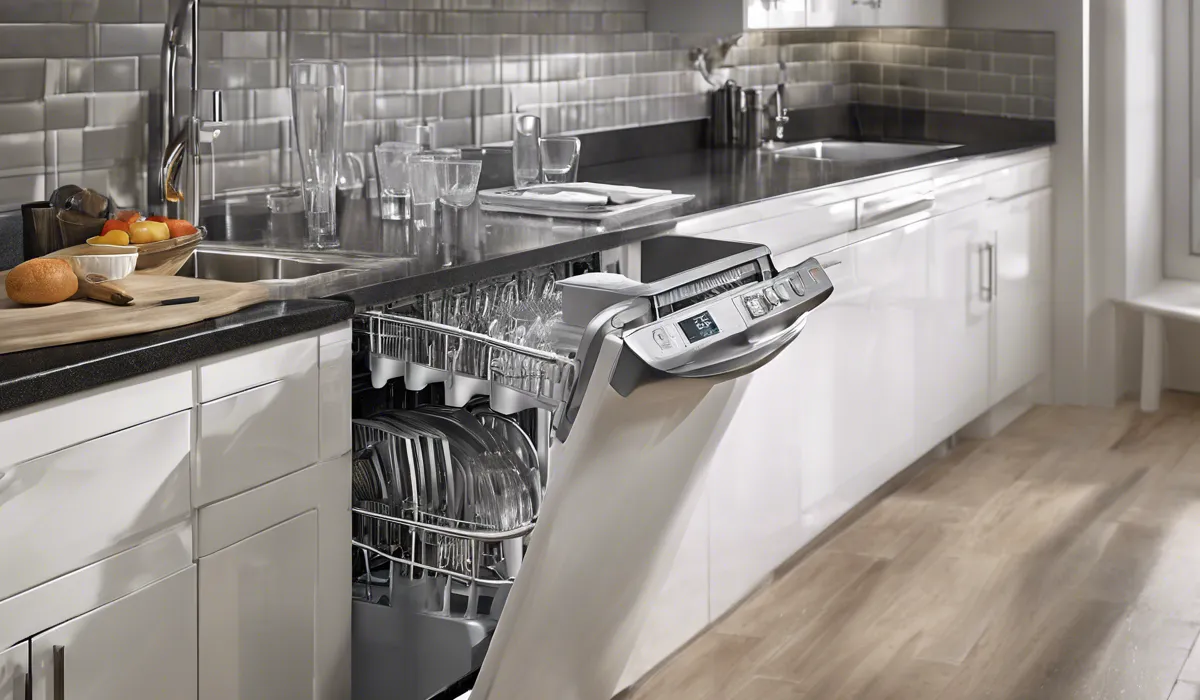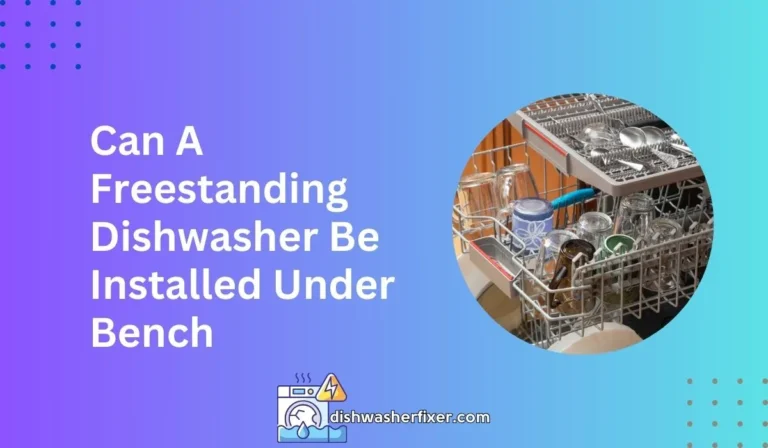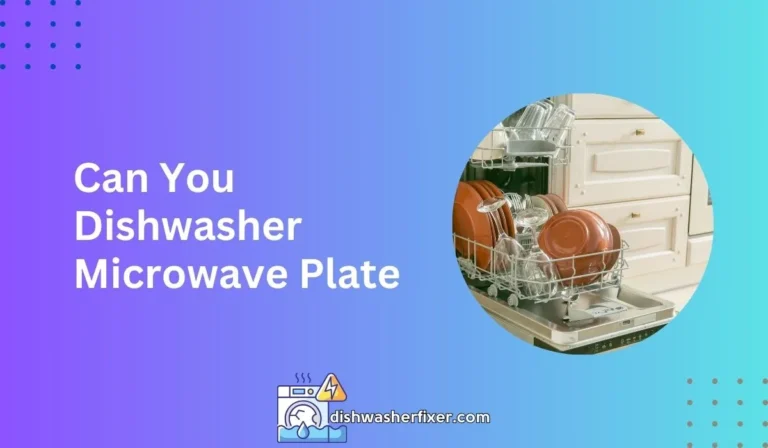Why Is My Dishwasher Filling Up With Water? Quick Fixes!
Your dishwasher may be filling up with water due to a stuck or faulty valve, a clogged drain hose, or a malfunctioning pump. Check the valve for obstructions and ensure the drain hose isn’t kinked or clogged. If these are clear, the issue may be with the pump or the dishwasher’s electronics.
Common Causes for Dishwashers Filling Up with Water

Faulty or Stuck Check Valve
A check valve is essential in preventing water from flowing back into the dishwasher after it has been drained. When this valve is stuck or faulty, it can cause the unit to fill up with water.
This could be due to debris, mineral buildup, or a malfunction. Over time, these obstructions can prevent the valve from closing properly, which allows water to re-enter the dishwasher.
Malfunctioning Water Inlet Valve
The water inlet valve controls the flow of water into the dishwasher. If it’s not functioning correctly, it might not shut off completely, leading to overfilling.
Wear and tear or mechanical failure can cause the valve to get stuck open, and sometimes, hard water deposits can interfere with its operation.
Clogged or Obstructed Drain Hose
The drain hose removes wastewater from the dishwasher. If it’s clogged or obstructed, water can’t flow out properly and may be forced back into the unit.
Common causes of clogs include food particles, grease, and other debris. Additionally, if the hose is kinked or improperly installed, it can restrict water flow.
Problems with the Dishwasher’s Float Switch
The float switch is a safety device that prevents the dishwasher from overfilling with water.
If this switch is stuck or broken, it cannot signal the inlet valve to shut off the water at the appropriate time, leading to an overflow situation. Debris or a misaligned float can cause such issues.
Issues with the Drain Pump or its Components
If the dishwasher’s drain pump is malfunctioning, it won’t effectively remove water from the machine.
Blockages, a faulty impeller, or motor failure can all result in an inability to pump water out. This can cause water to accumulate and potentially lead to leaks or overflows.
Troubleshooting Steps to Identify the Problem

Inspect the Check Valve for Obstructions or Damage
Begin by locating and examining the check valve. Look for signs of damage, such as cracks or breaks, and clear any debris that may be present. A damaged valve will need to be replaced to ensure it functions properly.
Test the Water Inlet Valve for Continuity and Proper Operation
Using a multimeter, check the water inlet valve for continuity. If the valve does not have continuity, it is defective and must be replaced. Additionally, observe if the valve shuts off completely after the dishwasher has filled to the correct level.
Check and Clean the Drain Hose and Air Gap
Ensure that the drain hose is not kinked and that it is properly routed. Clean the hose to remove any obstructions. If your system has an air gap, inspect and clean it as well to prevent backflow and ensure proper drainage.
Examine the Float and Float Switch for Proper Function
Manually lift the float to check if it’s moving freely. Use a multimeter to test the float switch. If the switch does not have continuity when the float is lifted, it’s likely faulty and should be replaced.
Evaluate the Drain Pump for Blockages or Mechanical Failure
Inspect the drain pump for any visible blockages. You can also test the pump’s motor with a multimeter to determine if it is receiving power. If the motor is not functioning or if there are signs of damage, consider replacing the drain pump.
Maintenance Tips to Prevent Future Issues

Regular Cleaning of the Dishwasher Filter and Drain Area
Clean the filter and drain area regularly to prevent the buildup of food particles and grease. This simple maintenance task can significantly reduce the likelihood of clogs and improve the efficiency of your dishwasher.
Periodic Inspection of the Hoses and Valves for Wear and Tear
Check the hoses and valves periodically for signs of wear, such as cracks or stiffness. Replace any components that show signs of degradation to prevent leaks and ensure the dishwasher is functioning optimally.
Ensuring Proper Use and Loading of the Dishwasher
Always load the dishwasher according to the manufacturer’s instructions. Overloading or improper loading can affect the dishwasher’s ability to drain effectively and may cause water to back up.
Recommendations for Routine Professional Servicing
Even with regular maintenance, having a professional service your dishwasher can help identify potential issues before they become major problems. Consider scheduling annual or bi-annual check-ups to ensure the longevity of your appliance.
Importance of Using the Correct Detergents and Rinse Aids
Using the right detergents and rinse aids can not only improve cleaning performance but also help maintain the internal components of your dishwasher.
Avoid using too much detergent, as this can lead to excess suds and contribute to water retention.
FAQs About Dishwasher Water Filling Issues
Why is my dishwasher not draining and filling up with water?
This could be due to a stuck valve, a clogged drain hose, or a malfunctioning pump. Check for obstructions in the valve and ensure the drain hose is not kinked or clogged.
How do I know if my dishwasher valve is stuck or faulty?
You can check for a stuck valve by looking for water that doesn’t stop entering the dishwasher or by inspecting the valve for physical blockages or damage.
What should I do if my dishwasher’s drain hose is clogged?
If you suspect a clogged drain hose, disconnect it and flush it with water to remove any blockages, or use a plumbing snake to clear the clog.
Could a malfunctioning pump cause my dishwasher to fill up with water?
Yes, if the dishwasher’s pump is malfunctioning, it might not properly drain water, leading to water filling up in the dishwasher.
What should I do if my dishwasher’s electronics are malfunctioning?
If the electronics are suspected to be at fault, it may require a professional diagnosis and repair, as this could involve complex circuitry or control issues.
Final Thoughts
A dishwasher filling with water often indicates a valve issue, a clogged drain hose, or a pump malfunction.
Regularly inspect the valve for blockages and check the drain hose for kinks or clogs. If these elements function properly, the problem may stem from the pump or the appliance’s electronic controls.





